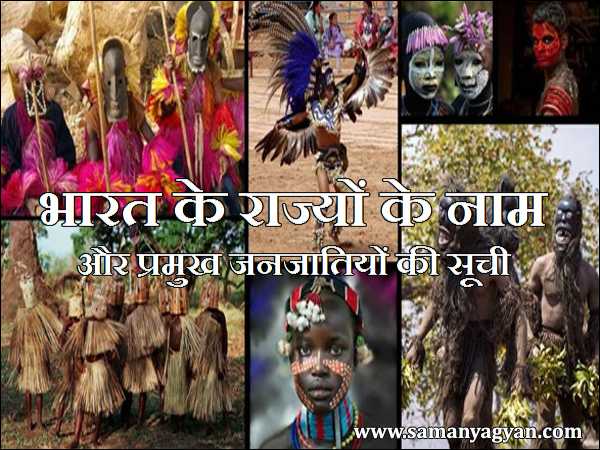Major Tribes of India:
Tribal community has a large population in India and there are more than 50 major tribal communities in the country. The tribal communities living in the country belong to the Negrito, Australoid and Mongoloid races. The Government of India is striving for the welfare of the Scheduled Tribes, which constitute 08 percent of the country's population. of these, 18 lakh belong to the primitive tribal group.
The Tenth Five Year Plan and the 2006-07 Annual Plan aim at strengthening the Scheduled Tribes through a three-tier system of social, economic empowerment and social justice. Under the Tenth Plan, Rs 5,754 crore has been sanctioned for the plan while Rs 1,760.19 crore has been proposed for the period 2006-07. The Tribal Sub Plan adopted during the Fifth Five Year Plan is being followed by the Central as well as the State Governments through various programmes.
In addition to the special central assistance being given to the tribal sub-plan, grants are also provided to the state governments for the special schemes being run for tribal welfare and development. National Tribal Finance Development Corporation has been set up to focus on the economic development of the tribes. 30 crore has been allocated for this item for the period 2006-07.
List of Major Tribes of India:
| Indian state name | Major tribes inhabiting |
| Andra Pradesh | Chenchu, Kocha, Gudava, Jatapa, Konda Doras, Konda Kapoor, Konda Reddy, Khonda, Sugelis, Lambadis, Yelladis, Yerukulas, Bhil, Gond, Kolam, Pradhan, Balmik. |
| Assam and Nagaland | Bodo, Dimsa Garo, Khasi, Kuki, Mizo, Mikir, Naga, Abor, Dafla, Mishmis, Aptanis, Sindho, Angami. |
| Jharkhand | Santhal, Asur, Baiga, Banjara, Birhor, Gond, Ho, Kharia, Khond, Munda, Korwa, Bhumij, Mal Pahadia, Soria Hills, Bijhiya, Cheru Lohra, Oraon, Kharwar, Kol, Bhil. |
| Maharashtra | Bhil, Gond, Agaria, Asura, Bharia, Koya, Worli, Koli, Duka Baiga, Gadavas, Kamar, Khadia, Khonda, Kol, Kolam, Korku, Korba, Munda, Oraon, Pradhan, Baghri. |
| West Bengal | Hos, Kora, Munda, Oraon, Bhumij, Santhal, Gero, Lepcha, Asur, Baiga, Banjara, Bhil, Gond, Birhor, Khond, Korba, Lohra. |
| Himachal Pradesh | Gaddi, Gurjar, Lahaul, Lamba, Pangwala, Kinnauri, Bakrayal. |
| Manipur | Kuki, Angami, Mizo, Purum, Seema. |
| Meghalaya | Khasi, Jaintia, Garo. |
| Tripura | Lushai, Maga, Halam, Khashia, Bhutia, Munda, Santhal, Bhil, Jamnia, Reang, Uchai. |
| Jammu and Kashmir | Gurjar, Bharwar Wal. |
| Gujarat | Kathodi, Siddis, Kolgha, Kotwalia, Padhar, Todia, Badali, Patelia. |
| Uttar Pradesh | Buxa, Tharu, Mahgir, Shorka, Kharwar, Tharu, Raji, Johnsari. |
| Uttaranchal | Bhotia, Jaunsari, Raji. |
| Kerala | Kadar, Irula, Muthuvan, Kanikkar, Malankuravan, Malarayana, Malavatan, Malayan, Mannan, Ullatan, Urali, Vishavan, Arnadan, Kahurnakan, Koraga, Kota, Kuriyayan, Kuruman, Paniyaan, Pulayana, Mallar, Kurumba. |
| Chhattisgarh | Korku, Bhil, Baiga, Gond, Agaria, Bharia, Korba, Kol, Oraon, Pradhan, Nagesia, Halwa, Bhatra, Madiya, Sahariya, Kamar, Kanwar. |
| Tamil Nadu | Toda, Kadar, Ikla, Kota, Adyan, Arandan, Kuttanayak, Korag, Kurichiyana, Maser, Kurumba, Kuruman, Muthuvan, Paniyan, Thulaya, Malayalee, Iravallan, Kanikkar, Mannan, Urasil, Vishavan, Irula. |
| Karnataka | Goudalu, Hakki, Pikki, Iruga, Jenu, Kuruv, Malaikud, Bhil, Gond, Toda, Worli, Chenchu, Koya, Anardan, Yerva, Holeya, Korma. |
| Orissa | Baiga, Banjara, Barhor, Chenchu, Gadaba, Gond, Hos, Jatayu, Juang, Kharia, Kol, Khond, Koya, Oraon, Santhal, Saora, Mundupattu. |
| Punjab | Gaddi, Swaganla, Bhot. |
| Rajasthan | Meena, Bhil, Garasiya, Sahariya, Sansi, Damor, Meo, Rawat, Merat, Koli. Andaman and Nicobar Islands Aungi Arba, North Sentinel, Andamanese, Nicobari, Shopan. |
| Arunachal Pradesh | Abor, Akka, Aptamis, Burmas, Dafla, Galong, Gomba, Kampti, Khobha Mismi, Sigumpo, Sirdukpen. |
| Sikkim | lepcha |
| Bihar | Banga, Banjara, Munda, Bhuiya, Khond |
| Madhya Pradesh | Bhil, Mihal, Birhor, Gadavan, Kamar, Nat |
Now practice related questions and see what you learnt?
☞ Tribes of India GK Questions and Answers 🔗
Read also:
- List of National Parks and Reserves of India 🔗
- Largest Dams in India: Name, Types, Importance, Features, Disadvantages 🔗
- Thermal Power Plants in India | List of Indian Thermal Plants 🔗
- Coal Producing State in India 🔗
Tribes of States FAQs:
According to the census conducted in the year 2011, the second largest tribe is the Gond tribe, whose population is 4,357,918, which is 35.6 percent of the total tribal population.
The Tana Bhagat Movement (1914–1920) was a movement in the Chhotanagpur region of British India against the policies of local British officials and the exploitative business practices of local landlords, mostly by the Oraon tribe.
Malwa is a region in western India made up of volcanic outcrops. Bhil tribe is found in Malwa region.
The Garo Khasi and Jaintia Hills were formed in the same era as the Malwa Plateau. The Garo, Khasi and Jaintia hills are located in Meghalaya. The hills are specifically named after the tribes found in that area.
The Chenchu tribe is found in Andhra Pradesh. This tribe is still dependent only on hunting for survival, it does not do agricultural work. The Chenchu tribe speaks the Chenchu language, which is a dialect of the Dravidian family.

